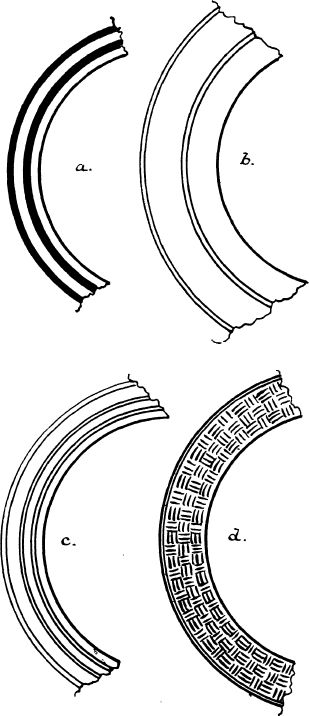Make Your Own Spanish Guitar - online book
Complete plans & Instruction on how make your own Spanish Guitar.
| Share page | Visit Us On FB |
 |
17
UNDERFACE STRUTS
The next job to undertake is the making and fitting of the cross braces and struts to the underface of the front. Full details are given in Fig. 18.
It may be wondered why the face of the guitar is made in (to the amateur guitar maker) such a complex pattern. The simple answer is in the high degree of flexibility required. To be responsive over the wide range of the guitar's compass, the face of the instrument must be thin�and being thin, it cannot withstand the stress imposed upon it by the strings. Thus arises the need for cross-bars and struts as reinforcement against string pull and for making sure that the face vibrates as a whole unit. In addi�tion, of course, the struts give mechanical strength to a naturally weak piece of wood �being fixed across the grain.
First, two main cross struts about 1/2" wide (as shown in the diagram) are cut from straight-grained spruce or pine and these are fitted in a similar manner to the struts fitted to the back. Next, two pieces of spruce or pine are fitted on each side of the soundhole and another piece of similar material glued between the soundhole and the top block. The purpose of these is to take pressure at these points and to prevent the splitting of the front of the guitar.
Having successfully fitted these struts, we now come to the " fan-strutting " under that portion of the front where the bridge is fitted.
Different luthiers have (and have had) their own ideas of where these struts should be positioned; their number; and how long (and how thick) they should be. It is sugges�ted that about 1/4" wide struts be used. In case the amateur guitar maker wishes to experi�ment, Fig. 19 shows details of fan-strutting by several past luthiers. We will proceed to give details of the design evolved by Marco Roccia.
The struts � seven in number � are of varying length and density and if the face of the guitar is to have a slight " arch " (and it should be mentioned that many Spanish guitars today are made without this arch, |
||
|
Fig. 17.�Some suggested designs for inlays round
the soundhole. a. b. and c use plain inlays of black
wood; d. can be built up of different coloured
woods. |
|||
|
|
|||